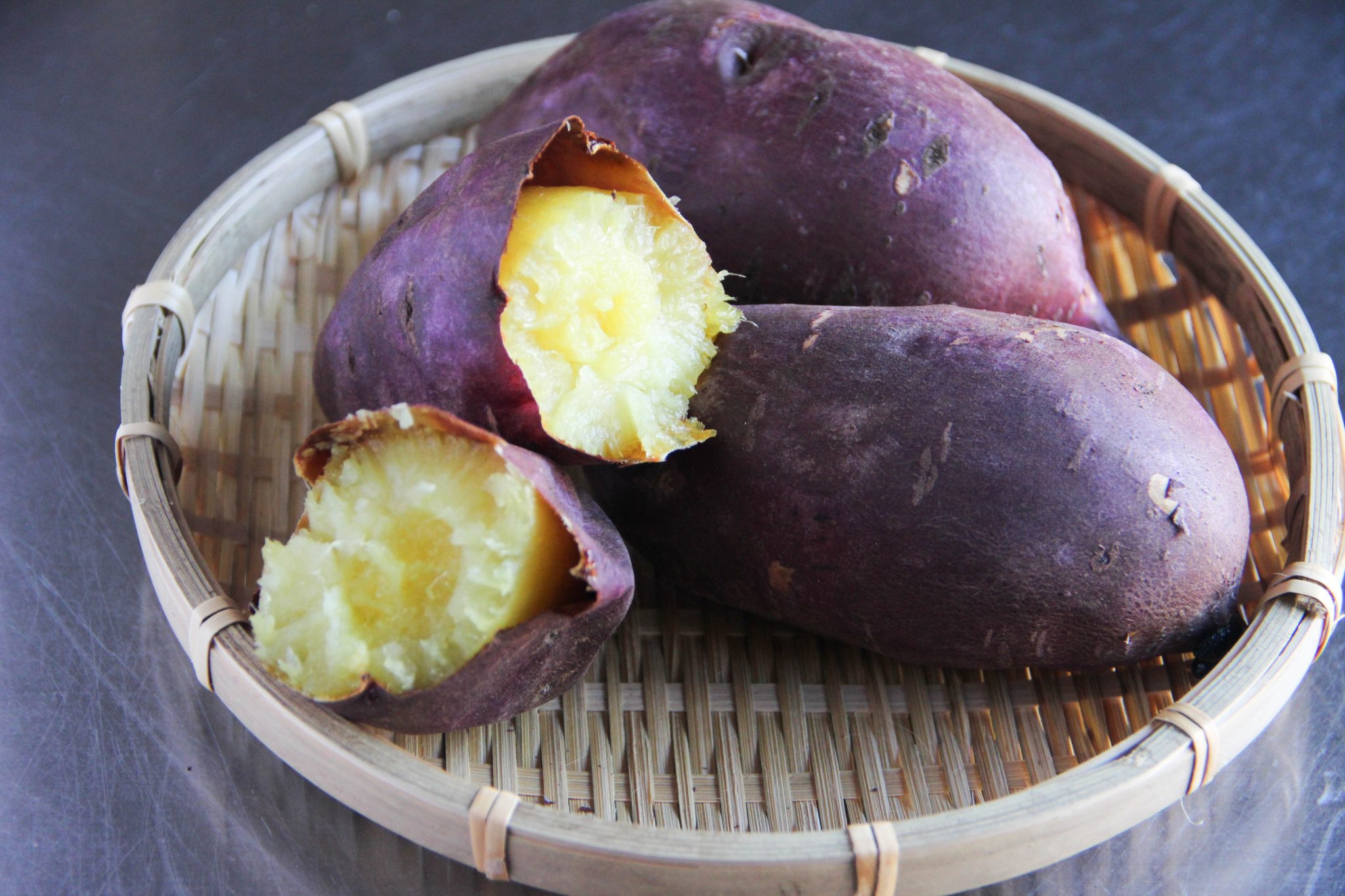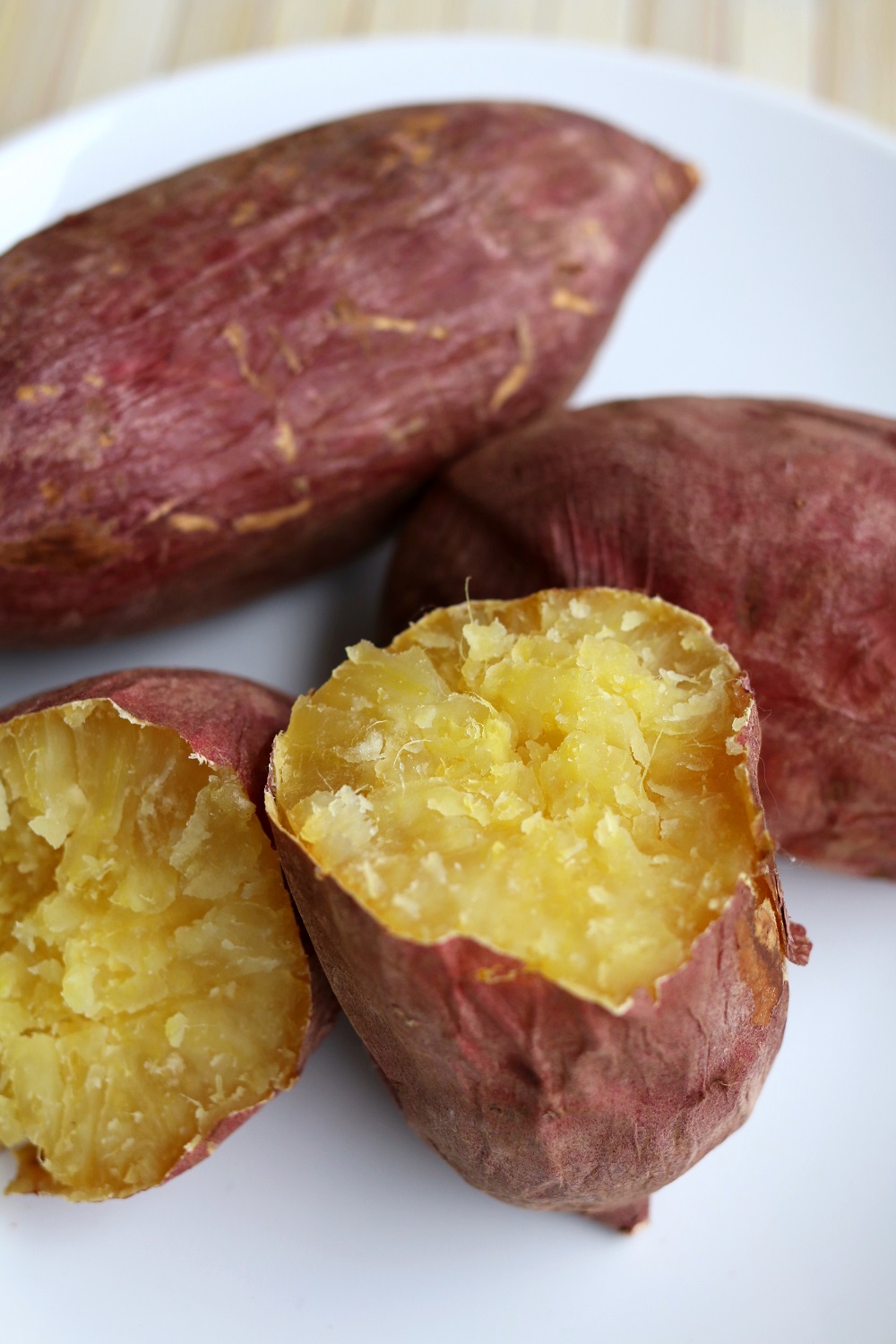

To meet this demand, there are two breeding programs in the United States at Louisiana State University and at North Carolina State University, and these programs work with local farms to create new specialty varieties with improved resistance to disease, visually pleasing colors, enhanced flavor, and long storage capabilities. As consumer need expands beyond the typical white and orange-fleshed varieties, demand for a year-round supply of specialty sweet potatoes encourages breeders to create new, improved varieties. Varieties of Japanese sweet potatoes that were created in the United States have become popular in the American market for their drier flesh, antioxidant-rich skin, and are used as a nutrient powerhouse in healthy home cooking. The roots will keep up to a week when stored in a cool, dry, and dark place with good air circulation. Japanese sweet potatoes pair well with meats such as pork chops, poultry, and steak, poached eggs, prunes, rice, sesame seeds, shiitake mushrooms, spinach, broccoli, scallions, onions, garlic, rosemary, thyme, miso, mirin, and wasabi. The sweet potatoes can also be mixed in a breakfast hash, diced and served with pasta, sliced into curries, tossed into salads, fried for tempura, or incorporated into soups and stews.
Japanese sweet potato skin#
The roots are most commonly consumed with the skin on and are roasted or baked whole to be served by themselves or topped with vegetables and sauces.


Japanese sweet potatoes are best suited for cooked applications such as roasting, baking, boiling, stir-frying, and steaming.

Japanese sweet potatoes contain fiber, thiamin, calcium, potassium, and vitamins A and C. Common regional names of these potatoes include Kotobuki, Murasaki, and Boniato, but in some marketplaces, the roots are often labeled generically as Japanese sweet potatoes. With an increase in demand, American breeders are developing improved Japanese varieties to create a year-round supply that have extended storage capabilities, resistance to disease, and enhanced flavor. Originally from Asia, these varieties have slowly increased in popularity in North America as consumers recognize the root’s antioxidant-rich properties. Also known as Oriental sweet potatoes and Japanese yams in the United States, Japanese sweet potatoes are a generic descriptor used for varieties that have red-purple skin and white flesh. Japanese sweet potatoes, botanically classified as Ipomoea batatas, are a dry-fleshed root that grows on sprawling vines and are members of the Convolvulaceae or morning glory family. Japanese sweet potatoes are available year-round in North America, with a peak season in the late summer through winter. Japanese sweet potatoes offer a drier, starchier texture than other sweet potato varieties and have a subtly sweet, nutty, and slightly floral, chestnut-like flavor. When raw, the flesh is firm and dense with a creamy white to pale yellow hue, deepening to a golden yellow and developing a softer feel when cooked. The textured skin has a smooth, semi-rough consistency with a few shallow eyes and ranges in color from pink, red, purple, to light brown with a red undertone. Japanese sweet potatoes are medium to large in size and are cylindrical, oblong, and slightly bulbous in shape with rounded to tapered ends.


 0 kommentar(er)
0 kommentar(er)
